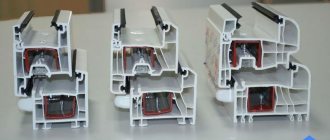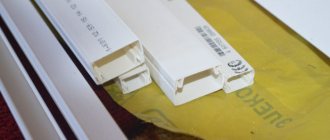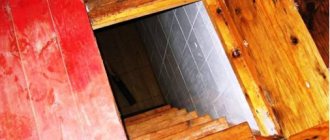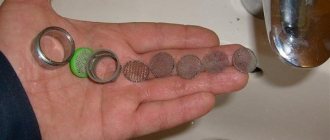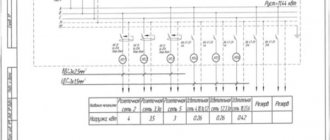A failed socket is one of the most unpleasant situations for the owner, as it requires almost immediate intervention. To fix all socket malfunctions, you can call an electrician or use your own hands. The second option is more economical, but without electrical knowledge it is more dangerous. Do you agree?
We will tell you how to replace or repair an electrical outlet with your own hands. We describe the work process in detail. Taking into account our recommendations, even a person ignorant of the intricacies of electrical installation can cope with this matter.
For a clearer understanding of the information, we have included useful diagrams, photo collections and video instructions.
Basic socket malfunctions
First of all, let's figure out what signals may indicate that the outlet requires urgent repair.
An appliance plugged into the outlet suddenly stops working or does not function properly. For example, a lighting fixture blinks, a fan starts and stops, etc. In this case, no other symptoms of a malfunction are detected. To make sure that the problem is really in the outlet, and not in the equipment connected to it (there may, for example, be a malfunction of the plug or power cord), you can conduct “testing”. A multimeter that is set to alternating voltage (ACV ˃ 300 V) is suitable for this purpose. If there is voltage, the device should show it in volts.
Checking the presence of voltage in the outlet using a multimeter
If the tester is silent or the voltage readings are clearly unstable, then the problem most likely lies in the outlet.
It is clear that not every home has a multimeter (although it never hurts to have one). And a regular indicator screwdriver in this case may not give an objective picture. For example, it can show the phase, but this does not mean that everything is in order with the socket. True, the absence of a phase will immediately indicate a problem. But the problem may also be in the conductor or on the zero contacts. How to check in this case?
Check with a screwdriver - indicator. If there is no phase, the malfunction is obvious. But the presence of a phase does not mean that the outlet is fully operational. The problem may also be on the neutral conductor.
To do this, some device is connected to the outlet, the owner is 100 percent sure of its functionality. And it is best that it is not any complex electronics - power surges can “kill” it. The optimal solution is a socket with an incandescent lamp, to which a piece of power cord with a plug at the end is connected.
The simplest way to monitor the presence of voltage in an outlet
Making such a “tester” yourself, which, by the way, can still be useful for cutting later, is something that does not require much expense and time. But the picture turns out to be objective. The presence of voltage is immediately visible, and by the evenness of the glow, the absence of blinking or flickering, one can judge the degree of reliability of the contacts in the socket. If there is no voltage, or it is unstable, you cannot do without repairs.
The second sign that requires immediate response. The device connected to the outlet works normally, but the outlet clearly smells of burnt insulation. This may be a symptom of the “beginning of the end.” Most often this happens if the load connected to the outlet exceeds the permissible load. The wires approaching it begin to heat up, and from here it’s already one step away from a serious accident.
Thus, you should immediately “detect” what exactly was connected to the outlet at the time such a sign appeared. A common reason is that a tee or extension cord is connected, and to it there is a whole “garland” of devices, the total power of which for some reason the owners do not care about. Alas, this attitude of many owners towards connecting electrical appliances is a fairly common occurrence. A clear prerequisite for the outlet to fail.
If the problem is eliminated when the overall load is normalized, then most likely the socket is working. And all that is required from the owners is prudence in its further exploitation. And if the load does not initially seem excessive, you will have to look into it further. But in any case, the outlet will have to be at least “inspected”.
- The third group of signs, or rather, clear signals that not everything is in order with the outlet. This includes not just the smell that appears, but the smoke rising from the outlet. The work is accompanied by sparking, which is manifested by characteristic crackling and light flashes. The socket body clearly heats up, sometimes to such temperatures that the plastic begins to “float”.
The second reason. Load.
Before disassembling the outlet, it is worth “estimating” what load you are connecting to this outlet.
The manufacturer claims that the socket (in my case) will work normally with a load current of up to 16 Amps, i.e. about 3 kW.
Accordingly, if your device has a power greater than this value, it would be logical to assume that the outlet is heating up precisely for this banal reason. In addition, if you plug a portable device into an outlet, and several devices with a total power of more than 3 kW are plugged into it, the effect will be the same.
Conclusion: distribute the devices over several sockets, and if it is one powerful device, install an socket that can “hold” more current.
Preparatory measures for repairs
Repairs should be made only after preparation for them. Even to correct the most minor problems, you should turn off the power to the apartment and make sure that the switches are turned off. After a power outage, you should check the voltage in the network with an indicator screwdriver - it should be absent in phase.
What will be needed for repairs
Every electrician has a set of tools. If a complete set is not available, then its individual components will have to be purchased to repair the electrical outlet.
In addition to the indicator screwdriver, you will need the following materials and tools:
- flat screwdriver;
- Phillips screwdriver;
- pliers (pliers);
- insulating tape (vinyl);
- sharp knife for stripping wires.
In case of some breakdowns, a soldering iron may be useful.
Important! The best electrician's tools are those with rubberized handles.
Repair sequence
To fix an electrical outlet that has come loose from the wall, just tighten the fastening screws. They are accessible by removing the protective cover. The screws are visible on the sides of the block. There are cases where the socket becomes loose, leading to it falling out of the wall. This usually happens with a structure secured without a cup holder. The sockets are secured with spacer plates.
They are metal, fastened with tightened bolts. The sharp teeth on the outer edges of the spacers cut into the concrete bed of the rosette. In old houses, building materials may crumble. How to fix a fallen socket? A cup holder is added to the old design. It is advisable to strengthen the bed around it with cement mortar. If the old socket is broken, the action algorithm is as follows:
- The bolt on the front panel is unscrewed.
- The front panel is removable.
- Contacts and wiring are inspected.
- If there are wires that have fallen out of the socket, they are returned to their place and clamped.
- If melted or scorched ends of the wiring are detected, they are cut off. The tops of the remaining wires are stripped.
- Oxidized contacts are protected with sandpaper.
- The structure is assembled by closing the front cover.
If you decide to repair the outlet yourself, you may encounter difficulties. It may, for example, require extension of wires. After burning and stripping, their length is not enough for connection. We have to build up new cables.
The wire strands on both sides are extended and twisted and covered with electrical tape or caps. You can connect the extended wire to the original one using terminals. However, they rarely enter the socket box.
The problem of extending wires often arises when deciding how to fix an outlet if it sparks. A short circuit in the structure leads to heating and charring of the cables. Internal contacts can literally fall apart. In this case, repair is impossible. The socket needs to be replaced.
Conductor shortening method
Sometimes it is possible to use wires from used wiring. Typically, this procedure is relevant when the displacement of the device is close to the distribution box. For a new device, the wall must be drilled using a special drill bit. Having dismantled the used socket, all contents are transferred to a new location. The further workflow is as follows:
- bend the wire and drill a hole in the wall where you plan to place the box;
- run the wire and place the box in the drilled niche;
- Use putty to cover the wall near the box and itself;
- connect wires to the device;
- At the end of the process, close the new device with a lid.
Using this method, the home master has advantages: there is no need to develop a new groove, used materials are used.
If several outlets do not work
Typically, sockets are connected to circuit breakers in the panel in groups, since installing a separate circuit breaker on each of them is very expensive and not always justified. Accordingly, you need to make sure that the corresponding machine is not turned off. You need to try turning it on. If it turns off immediately, then there is a short circuit somewhere on the line. It needs to be localized and eliminated.
Often, the wires from the outlets run through one or more junction boxes. You need to check the quality of the connections in them.
Possibly where there is a twist that has weakened over time, causing the contact to disappear. Today, twisting is prohibited, so you should resort to soldering or welding connections. You can also use crimp sleeves or terminal blocks. When drilling walls, there is always a risk of breaking the wire with the drill. In this case, you will have to replace the damaged section of the line to restore the functionality of the sockets.
Useful tips
When carrying out repair work on an electrical circuit, it is important to follow a few tips
- Always check the voltage level before carrying out repairs.
- If possible, call a specialist for electrical repairs.
- Install high quality machines. This requirement also applies to wires, sockets and switches.
- For safety, use cotton tape (it provides better insulation).
- The appearance of visual damage or thinning of the metal indicates the need to replace the socket.
Please note that electricity is deadly and should not be trifled with. If any problems arise with the outlet, junction box or input panel, it is better to fix the problem immediately.
Delaying repairs often leads to aggravation of the situation, damage to household appliances and even a fire.
Additionally, working on an electrical circuit without the proper knowledge may result in exposure to voltage, serious internal injury, or death.
If there is no voltage in all outlets
Most often this happens during a power outage initiated by the power supply company. It is necessary to check the presence of voltage at the terminals of the input circuit breaker in the electrical panel. You can also ask your neighbors if they have electricity?
The input machine itself may be faulty. If there is voltage at the input terminals, you can try turning off and turning on the machine again. If there are no changes, the input machine should be replaced, as it is probably faulty.
You also need to check the integrity of the line connecting the apartment electrical panel to the one installed on the landing. In the case of a private house, you should make sure that everything is in order with the overhead line connecting the house to the power line.
Connection
Basic Rules:
- connecting electrical outlets of any type must be done when the power supply is turned off;
- open wiring electrical cable must be laid in a special box or protective corrugation.
Video: how to connect an outlet.
The algorithm of actions is as follows:
- de-energize the electrical wiring (by turning off the corresponding circuit breaker);
- disassemble the socket;
- place the base at the intended location and mark the holes for fasteners, usually there are two or four of them;
- in the case when the installation is made on a wall made of brick or concrete, the marked holes are drilled and a plastic dowel is inserted into them. The base of the socket can be screwed to a wooden surface with self-tapping screws. If the wall is made of plasterboard, then a special plastic fastener is used - “butterfly”;
Butterfly fasteners for drywall and PVC
when the base is screwed, electrical wiring wires are connected to it; to do this, you will need to carefully break out the corresponding hole on the desired side of the box
The plastic in the place where the wires are supplied is thinner, so there will be no problems with this; we connect the wires to the terminals, the photo shows how double surface-mounted sockets are connected (pay attention to the correct polarity, especially for the ground wire, if any); How to connect a 2-gang socket
How to connect a 2-gang socket
How triple surface-mounted sockets are connected is shown in the figure below
Please note that the ground wire is not connected from socket to socket, but to each separately. A 4-socket outlet is connected according to the same principle;
Connection diagram for 3-socket outlets
- after connecting the wires, the socket or group of sockets is assembled;
- The power supply is turned on and the operation of the devices is checked.
As you can see, if certain safety rules are observed, overhead sockets can be connected without problems. Their cost in various regions of Russia is almost the same as in Moscow, so there is no point in citing it.
You don't have to be an electrician to understand the process of installing sockets and switches. You need to know the simple rules and stages of work formulated in this article.
How to ring a socket
Now, having a sufficient amount of information about the faulty socket, you can start calling the wiring. Usually, at this stage you already know for sure that, for example, a Phase is missing and you need to localize the location of the electrical circuit damage. But, as I wrote earlier, diagnostics can be started immediately with dialing, it’s just that this method is less effective and, accordingly, longer.
A continuity test with a multimeter or tester does not require the presence of electric current in the network to carry out measurements. Be sure to turn off the automatic protective equipment, de-energize the controlled line before starting diagnostic work, and make sure that there is no voltage in the outlet.
Turn off the dialing or resistance determination mode on the tester (which is basically the same thing) and proceed according to the following plan:
How to determine a short circuit in an outlet
First of all, we call for the presence of a short circuit between phase and zero. To do this, follow the following step-by-step instructions:
- The electrical current supply is turned off at the test site
- Select the Vertebrae mode on the multimeter
- The red probe is placed in the left socket of the socket, and the black one in the right. It can be the other way around; there is no fundamental difference for the purity of the experiment.
Then two results are possible: You will hear a beep from the multimeter and on the display a value close to “0”, or anything other than one. This means the socket is faulty! The contacts of the mechanism or the electrical wiring that goes to them are shorted in some place.
Most often, in this case, your circuit breaker for this group probably triggered and did not turn on, signaling a short circuit (link to article). In this case, it is necessary to look for the place where the neutral and phase conductors are closed.
If there is no sound signal, and “1” is always displayed on the screen. This is a good sign, it means that parallel wiring lines do not intersect and most likely, one of them has broken somewhere. Proceed to the next step.
Required Tools
For simple wiring work that can be done at home, you need a very small set of tools:
- Voltage indicator. Electric current is invisible to the eye, and not everyone can determine its presence by touching a conductor without consequences. For a preliminary assessment of the condition of the wiring, the simplest indicator will do, but it is better if it is a sensitive device that responds to an electromagnetic field - sometimes you need to find out which way the wire goes from the socket.
- Dielectric pliers. It is generally accepted that they are distinguished by the presence of rubber covers on the handles, but now even standard plumbing tools are equipped with these so that they do not slip in the hand, so on paper those that have been verified are considered dielectric, but in practice they are simply insulated. If you only have old pliers at home with non-insulated handles, then you just need to wrap them with electrical tape. In this case, you must first apply a couple of pieces of tape crosswise to the lower part of the handle, and then wrap it around the main part.
- Screwdrivers - Phillips screwdrivers are most often used, but a regular straight screwdriver can also be useful.
- Knife. The smallest one will do - it is only needed for cleaning the insulation from the wires.
- Hammer and pry bar. They are needed as a last resort if you have to poke around the walls in search of distribution boxes, but as practice shows, they will come in handy in any case - at least as stands.
This set should be enough, but if a standard probe is used, then you will also need some small device to additionally check the socket - at least a table lamp. You can also prepare a piece of wire so that it will last from the outlet to the far end of the room - you may have to ring the wires one at a time.
Conductor extension method
When a newly installed device is planned far from the former node, a method is used that involves lengthening the conductor. With this method it is possible to use an old box. Sequencing:
- develop a groove on the surface of the wall from the previous point to the new one;
- drill grooves for the socket;
- de-energize the network;
- dismantle a used socket by connecting wires in its box - new and old;
- stretch the cable to the fine;
- insert the conductor into the updated box, and then install it;
- connect the conductors to the updated device and cover with a lid;
- putty the new groove.
To connect conductors, use:
Spring terminals and terminal blocks.
The former are suitable for copper and aluminum conductors, while the latter should not be used for aluminum conductors, which are characterized by increased fragility. The pads are either disposable or reusable.
Insulation clamps.
They come in several colors, which clearly mark the conductors (“phase”, “zero”, “grounded”).
Twisting and soldering.
The most reliable way to weld is with a soldering iron. The cable ends are twisted and immersed in a container of solder. After soldering, electrical tape is wound.
